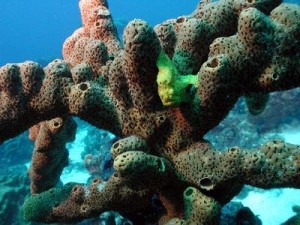About Curacao
 The history of Curaçao
The history of Curaçao
Curaçao is an island of volcanic origin. The island arose around 100 million years ago on the seabed and was lifted around 40 million years later above sea level. Before the first Europeans conquered Curaçao, the island had been inhabited by various Indian tribes. These Indians were from South America. In 1634 Curaçao was conquered by the Dutch. The West-Indian Compagnie was established on Curacao. Today, the island is part of the Netherlands Antilles wich is together with Nederland and Aruba part of the Koningkrijk de Nederlanden. The Netherlands Antilles exist of five islands: St. Martin, Saba, Statia, Bonaire and Curaçao.
The island
The rich history of the island of Curaçao has clearly left its traces. Especially in the capital city Willemstad, the colonial past is still clearly visible. Outside Willemstad are mainly historical estates that draw the attention. The wonderful climate and natural parks above and below water also make a great impression.
Landscape of Curaçao
With an area of 444 m2, Curaçao is the largest island of the Netherlands Antilles. It has over 130,000 inhabitants what makes it the island with the most inhabitants of the Netherlands Antilles. The island has a elongated shape and is for the most part relatively flat with some hills. Only the north has a hilly landscape. Here is also the highest point on the island, over 375 meters high, called Christopher Mountain. Around this same hill is the Christopher park situated.
The north east coast of Curaçao is rocky and not very accessible. The southwest coast has various bays and inlets with very attractive tropical sand beaches. In front of de the soutwest part of this coast, lies the Curaçao underwaterpark.|
 Center of Curaçao
Center of Curaçao
On the south west side of the island we find the St. Anna Bay, providing access to the Schottegat. This sheltered natural harbor was in 1634 the occasion for the Dutch to conquer the island. Shortly after the conquest the construction of Fort Amsterdam began. The realization of this defensive structure was also the beginning of Willemstad. In the centuries that followed, Willemstad became a major port.
In the neighborhoods Punda, Scharloo, Otrobanda and Pietermaai are many historic buildings that still remind us on this past of trading. The historic center of Willemstad was put on the World Heritage List of UNESCO in 1997. An international recognition of the cultural and historical importance of Willemstad.
Some of the interesting activities of Curaçao
The sea around Curaçao is very attractive to divers. Divers can swim here in the middle of very diverse colorful coral reefs with a beautiful marine life.
 Curaçao are also different tradition festivals and events. In March / April is the Seu Harvest Celebration. On the Monday after the second day of Easter Sunday the local people dance trough the streets of Otrobanda in traditional clothing. Queensday and Carnival are also events that are exuberantly celebrated on Curaçao. There are also many places ,where you can rent a jet ski or a boat, on Curaçao. There are also many nice places on Curaçao where people can go to enjoy nature and the tropical atmosphere.
Curaçao are also different tradition festivals and events. In March / April is the Seu Harvest Celebration. On the Monday after the second day of Easter Sunday the local people dance trough the streets of Otrobanda in traditional clothing. Queensday and Carnival are also events that are exuberantly celebrated on Curaçao. There are also many places ,where you can rent a jet ski or a boat, on Curaçao. There are also many nice places on Curaçao where people can go to enjoy nature and the tropical atmosphere.
Transport to and from the island
Scheduled flights connect Curaçao with Europe, North and South America, and several other Caribbean islands. Public transport on Curacao is limited. Auto Bus Company Curaçao has some bus service in various parts of the island. In addition, a large number of private busses are running on Curacao. The most important stations in Willemstad are in front of the post office in Punda and Riffort in Otrabanda. Elsewhere on the island, you can simply put up your hand. The best way to see Curaçao is by car.
With an average of 27 degrees during the whole year, Curaçao has a nice and sunny climate. The paradise on earth we call Curacao:
LINKJES
Voor alles wat uw woongenot beter maakt:
Voor studentenhuisvesting:
Voor het ideale golfjurkje ook op Curacao:
La Peek
De mooiste vakantie villa te huur op Curacao
Villa Libre Jan Thiel Curacao







